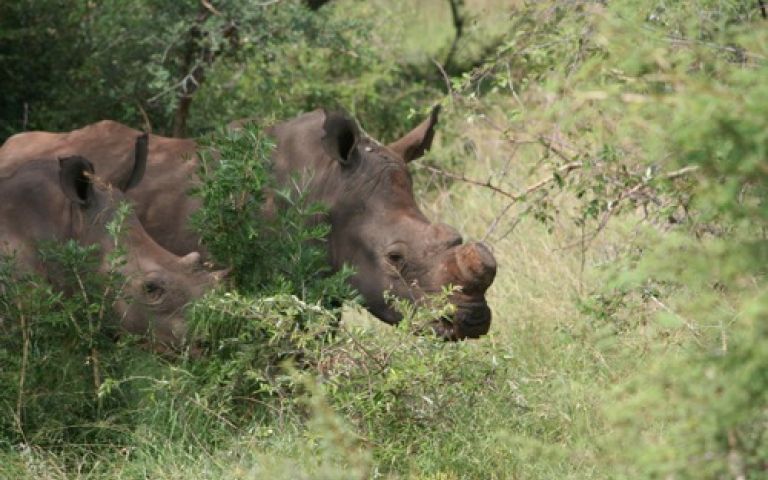The black rhino is emblematic of how civil war and corruption in Africa decimate endangered animal populations and rob local economies of potential sources of income. Black rhinos have declined from 65,000 in 1970 to 4,000 today due to crises in Mozambique, Angola, and, now, Zimbabwe.
Since President Robert Mugabe's election in 2002, conservation funding to Zimbabwe has dropped substantially, according to local conservationists, and support for the much-heralded Transfrontier Park has all but evaporated. Last year, a record 20 black rhinos were shot in the Lowveld Conservancy, and 4 captured poachers were released with a slap on the wrist. There may be hope for the beasts: since 2005, a controversial measure in South Africa allows hunters to kill five older, male black rhinos each year for about $250,000 a pop – ostensibly supporting their conservation programs and a local guiding industry. Rhino hunting is illegal in Zimbabwe, but Dick Pitman of the Zambezi Society says the only income Zimbabwe's parks are getting "is coming from sport hunting [of other animals] because sport hunting is more resilient than tourism."
Indeed, over the last 15 years, the trophy hunting industry has soared in southern Africa, creating economic incentives for cattle ranchers to raise wild game and restore their land to a semi-natural state, which can also benefit native plants and less charismatic wildlife, like insects, reptiles, and amphibians. Indeed, conservation groups like the International Rhino Foundation in Zimbabwe and the World Wildlife Fund in KwaZulu-Natal, South Africa have worked hard to convince small private game ranchers to drop their fences in order to provide large enough regions to support sustainable rhino populations. Borrell will join a hunting guide and his client on a "green hunt" of a black rhino on private land. He will also visit landowners and conservationists throughout southern Africa to learn about the continued threat of poaching and the risks and benefits of turning an endangered species into a market commodity.

